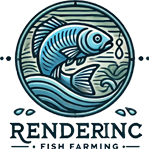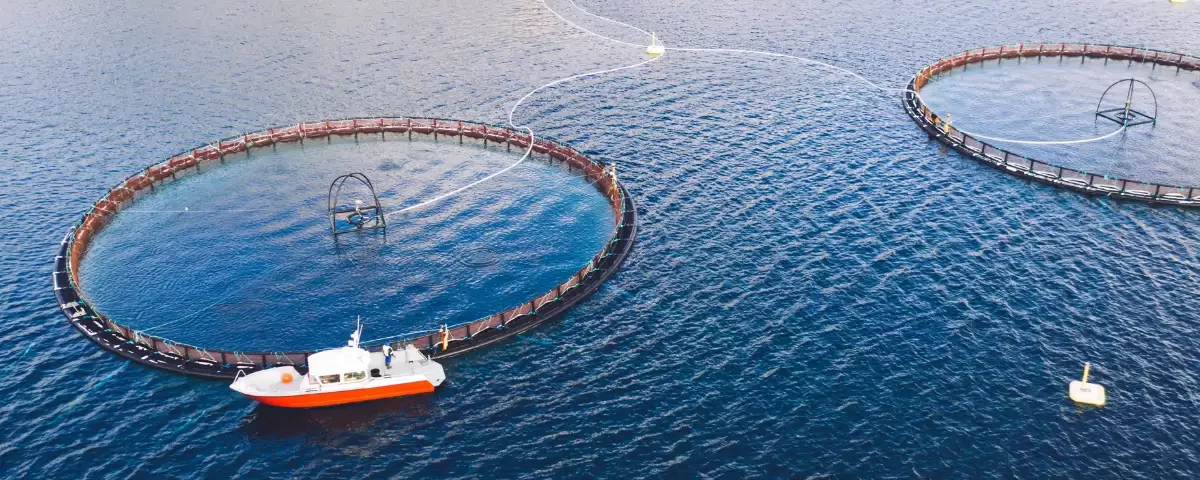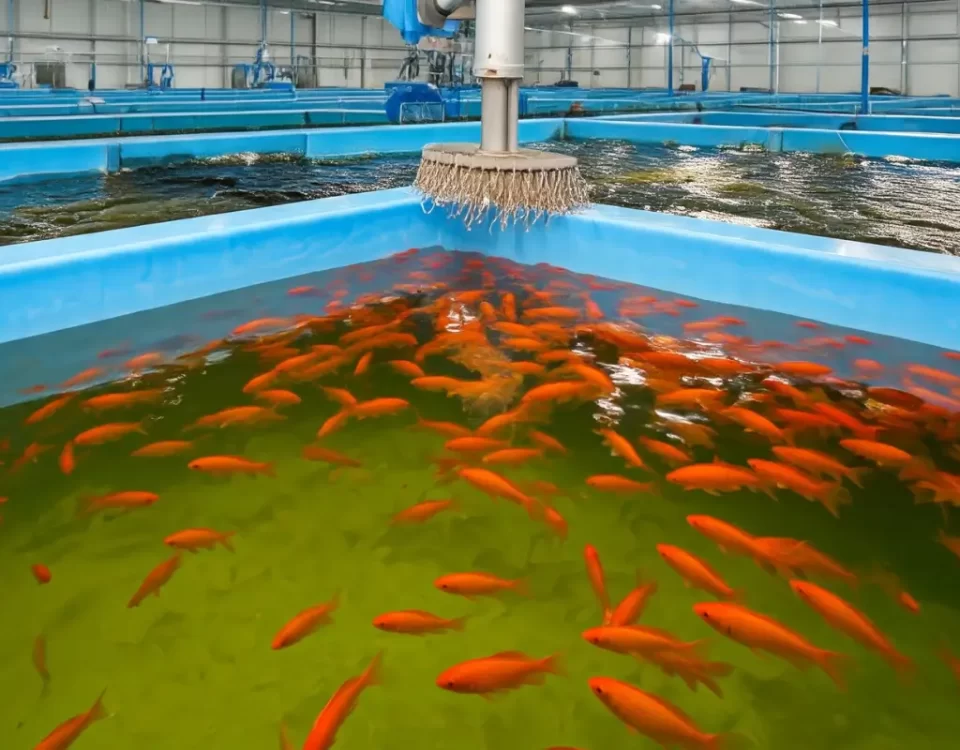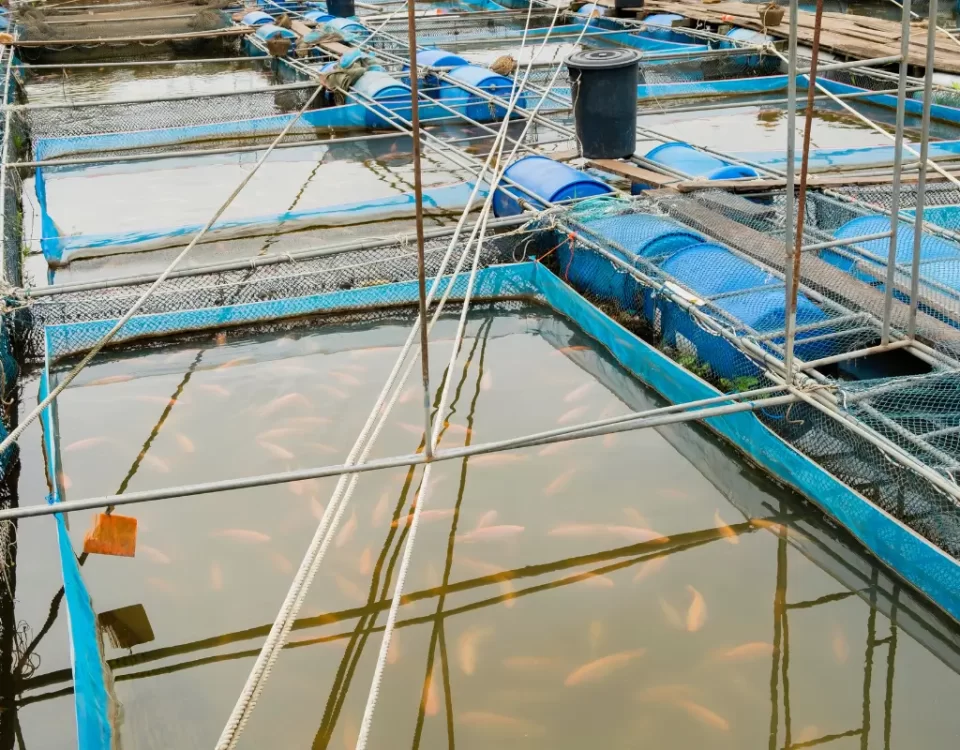Cutting-Edge Aquaculture Technologies for Reducing Environmental Impact

Step-by-Step Guide to Building Your Own Fish Farm
August 22, 2024
Innovative Aquaculture Systems: Maximizing Efficiency and Sustainability
August 25, 2024In the realm of sustainable food production, aquaculture stands as a pivotal player in meeting the ever-growing global demand for seafood. As the world’s population burgeons and traditional fishing methods face growing challenges in meeting this surge, aquaculture emerges as a crucial solution to supplement wild-caught seafood. This method of cultivating aquatic organisms in a controlled environment not only aids in meeting the increasing seafood demands but also presents an opportunity to support food security on a global scale.
However, beneath the surface of this seemingly promising solution lies a complex web of environmental challenges that have long plagued traditional aquaculture practices. Issues such as water pollution from excess feed and fish waste, disease outbreaks due to high stocking densities, and habitat destruction from coastal aquaculture facilities have raised alarms about the sustainability of current aquaculture methods. These problems not only pose threats to marine ecosystems but also hinder the industry’s ability to provide seafood in an environmentally responsible manner.
The purpose of this article is to delve into the realm of innovative aquaculture technologies that offer a glimmer of hope in addressing the environmental impact of fish farming. By exploring cutting-edge solutions and advancements in aquaculture practices, we aim to shed light on how these technologies can revolutionize the industry and pave the way towards a more sustainable future for aquaculture. Through a combination of scientific ingenuity and a dedication to environmental stewardship, these technologies hold the promise of mitigating the adverse effects of aquaculture on our oceans and freshwater ecosystems.
Sustainable Feed Solutions
The quest for sustainability in aquaculture encompasses various aspects, with the type of feed used playing a crucial role in determining the industry’s environmental impact. Traditional aquafeeds, commonly derived from wild-caught fish, pose a significant challenge due to their contribution to overfishing and habitat destruction. As aquaculture continues to expand to meet the demands of a growing population, the need for innovative feed solutions has never been more urgent.
Role of Feed in Aquaculture and Environmental Impact
Feed constitutes a substantial percentage of the operational costs in aquaculture, making it a key factor in the industry’s sustainability efforts. The sourcing of feed ingredients, particularly fishmeal and fish oil, has been a longstanding concern due to its reliance on wild fish stocks. This practice not only depletes marine resources but also disrupts the delicate balance of ocean ecosystems. Moreover, the inefficient conversion of wild-caught fish into feed for farmed fish results in a significant waste of energy and resources, further exacerbating the environmental footprint of aquaculture operations.
Innovative Feed Solutions
In response to these challenges, the aquaculture industry is increasingly turning to alternative feed sources that offer a more sustainable and environmentally friendly option. One promising solution comes in the form of insect-based feeds, which utilize insects bred on organic waste to create a protein-rich feed source for fish. Insects are highly efficient in converting organic matter into high-quality protein, requiring minimal resources and producing significantly fewer greenhouse gas emissions compared to traditional feed ingredients.
Plant-Based Diets for Aquaculture
Another innovative approach to sustainable feeding practices in aquaculture involves the use of plant-based diets as a substitute for fishmeal and fish oil. Plant proteins derived from sources such as soy, corn, or algae can effectively meet the nutritional needs of farmed fish while reducing the reliance on wild fish as a feed ingredient. By transitioning to plant-based feeds, aquaculture operations can significantly alleviate the pressure on wild fish stocks and contribute to a more circular and environmentally conscious food production system.
By embracing these cutting-edge feed solutions, the aquaculture industry has the potential to transform its practices and reduce its environmental impact significantly. Investing in sustainable feed options not only improves the eco-efficiency of aquaculture operations but also paves the way for a more sustainable and resilient future for the industry and our planet.
Water Quality Management Systems
Maintaining good water quality is paramount in aquaculture systems as it directly impacts the health and growth of aquatic species. Poor water quality can lead to stress, disease outbreaks, and stunted growth, ultimately impacting the productivity of fish farms. Therefore, implementing advanced water quality management systems is crucial for ensuring the success and sustainability of aquaculture operations.
Importance of Good Water Quality
In aquaculture, water quality parameters such as dissolved oxygen levels, pH, temperature, and ammonia concentration must be closely monitored and controlled. Optimal water quality ensures that the aquatic organisms thrive in an environment that mimics their natural habitat. By maintaining good water quality, fish farmers can enhance stocking densities and decrease the risk of diseases, leading to improved production efficiency and profitability.
Advanced Water Treatment Technologies
Advanced water treatment technologies like recirculating aquaculture systems (RAS) and biofloc technology are revolutionizing the way fish farms manage water quality. RAS aquaculture involves continuously filtering and recirculating water within the system, minimizing water exchange with the surrounding environment. This not only reduces water usage significantly but also helps in preventing pollution by capturing and treating waste products.
Sustainable Practices and Benefits
Biofloc technology is another innovative approach that promotes sustainable aquaculture practices. By fostering the growth of beneficial microorganisms within the water column, biofloc systems can effectively convert excess nutrients into microbial biomass, which serves as a natural source of food for the cultured species. This process not only improves water quality but also reduces the reliance on external feeds, thereby enhancing the overall sustainability of fish farming operations. Implementing these cutting-edge technologies can lead to decreased environmental impact and improved resource efficiency in aquaculture.
Site Selection and Offshore Aquaculture
In the realm of aquaculture, site selection holds paramount importance as it directly influences the sustainability and productivity of fish farming operations. Choosing the right location for aquaculture ventures involves a meticulous assessment of various factors, including water quality, current patterns, proximity to natural habitats, and social acceptance. A well-chosen site not only ensures optimal growth conditions for aquatic species but also helps in minimizing environmental impacts.
The concept of offshore aquaculture has emerged as a promising solution to address the sustainability challenges faced by traditional nearshore fish farms. By moving aquaculture operations further offshore into deeper waters, the potential for environmental interaction and pollution is significantly reduced. Offshore aquaculture presents a range of benefits, including enhanced water circulation, reduced disease transmission, and lower risk of nutrient buildup in coastal areas.
Technological advancements have played a pivotal role in advancing offshore aquaculture methods and mitigating potential environmental risks. Innovations such as submersible cages allow fish farms to operate at deeper offshore locations, minimizing interactions with coastal ecosystems and reducing environmental impacts. Moreover, remote monitoring systems equipped with sensors and cameras enable real-time tracking of water quality parameters, fish behavior, and environmental conditions, facilitating proactive management practices to ensure sustainable aquaculture operations.
The integration of modern technologies in offshore aquaculture not only optimizes production efficiency but also reinforces environmental stewardship in the aquaculture industry. By harnessing innovation and strategic site selection, aquaculture practitioners can embrace sustainable practices that not only benefit their operations but also contribute to the conservation of marine ecosystems.
Genetic Improvement and Disease Management
In the realm of aquaculture, where the delicate balance of sustainability and productivity is constantly in play, leveraging genetic improvement has emerged as a game-changer. By selectively breeding fish with superior traits such as disease resistance and growth efficiency, aquaculture operations can not only boost their profitability but also mitigate their environmental impact. Genetic improvement holds the key to unlocking a new era of sustainable fish farming.
Selective Breeding Programs and Biotechnological Approaches
Selective breeding programs are at the forefront of genetic improvement in aquaculture. By identifying and pairing individuals with desirable traits, such as disease resistance or rapid growth, aquaculturists can accelerate the evolution of their fish stocks. Moreover, biotechnological advances, such as genetic markers and transgenic techniques, offer innovative avenues to enhance genetic traits in farmed fish. These advancements enable the precise manipulation of genes to achieve desired characteristics, marking a significant leap forward in aquaculture technology.
Strategies for Disease Management
Disease outbreaks pose a significant threat to aquaculture operations worldwide, leading to economic losses and environmental degradation. To combat this challenge, aquaculturists employ a multi-faceted approach to disease management. Vaccination programs, tailored to specific pathogens, help bolster the immune response of farmed fish and reduce the likelihood of infection. Additionally, the use of probiotics – beneficial bacteria that promote a healthy gut microbiome – has shown promise in enhancing disease resistance in aquaculture species. Furthermore, the integration of genetic resistance through selective breeding programs offers a sustainable, long-term solution to combating diseases in aquaculture.
In conclusion, genetic improvement in aquaculture plays a pivotal role in enhancing disease resistance and growth efficiency in farmed fish. By implementing selective breeding programs and utilizing biotechnological approaches, aquaculturists can breed fish with superior traits, leading to more sustainable and resilient aquaculture systems. Additionally, by deploying strategic disease management strategies such as vaccines, probiotics, and genetic resistance, aquaculture operations can safeguard their stocks against disease outbreaks, ensuring both ecological and economic sustainability in the long run.
Energy Efficiency and Renewable Energy Sources
Aquaculture production requires a significant amount of energy, from maintaining water quality to running feeding systems and processing facilities. The energy consumption associated with traditional aquaculture practices can have a notable impact on the environment, contributing to greenhouse gas emissions and depleting fossil fuel resources. Therefore, it is imperative for the aquaculture industry to focus on enhancing energy efficiency and integrating renewable energy sources to mitigate these negative effects.
Energy Consumption in Aquaculture Production
Aquaculture facilities often rely on electricity to power water circulation systems, aerators, heaters, and other equipment essential for fish health and growth. The high energy demand for maintaining optimal conditions in fish farms can result in significant operational costs and environmental impacts. Addressing the energy consumption of aquaculture production is crucial for sustainable development in the industry.
Improving Energy Efficiency through Automation and Optimization
To reduce energy consumption in aquaculture facilities, advancements in technology have paved the way for automation and optimization strategies. Implementing automated control systems can help regulate water temperature, aeration levels, and feeding schedules more efficiently, thereby minimizing energy wastage. Optimal utilization of resources through data-driven insights and predictive analytics can further enhance energy efficiency in aquaculture operations.
Utilizing Renewable Energy Sources in Aquaculture
Embracing renewable energy sources such as solar power and wind energy can significantly decrease the carbon footprint of aquaculture operations. Solar panels installed on aquaculture facilities can harness the power of the sun to generate electricity for water circulation and heating systems. Similarly, wind turbines can be utilized to supplement energy needs, reducing reliance on non-renewable resources and decreasing greenhouse gas emissions associated with conventional energy sources. Integrating renewable energy solutions into aquaculture practices not only fosters environmental sustainability but also promotes long-term cost savings for fish farmers.
Case Studies and Success Stories
In the realm of aquaculture, several pioneering operations have embraced cutting-edge technologies to revolutionize their practices and minimize their environmental impact. One such standout example is the Nordic Aquafarms located in Norway. By integrating state-of-the-art recirculating aquaculture systems (RAS) into their salmon farming operations, Nordic Aquafarms has not only significantly reduced water usage but has also effectively mitigated the discharge of pollutants into the surrounding ecosystem. Through the implementation of RAS technology, this farm has set a remarkable benchmark in sustainable aquaculture practices.
Furthermore, on the other side of the globe, a shrimp farm in Ecuador exemplifies the transformative power of innovative practices in aquaculture. This farm utilized cutting-edge sensor technology to monitor water quality parameters in real-time, allowing for precise adjustments in feed and oxygen levels. As a result, the farm achieved a substantial reduction in waste production and improved overall efficiency. This success story underscores the tangible benefits of embracing high-tech solutions in aquaculture to promote both environmental stewardship and operational excellence.
In addition to individual case studies, collective efforts within the aquaculture industry have also yielded remarkable results in enhancing sustainability. The Global Salmon Initiative (GSI), comprising major salmon farming companies worldwide, has made significant strides in reducing the industry’s carbon footprint through collaborative initiatives and the adoption of innovative technologies. By sharing best practices and investing in research and development, GSI members have collectively contributed to the advancement of environmentally responsible aquaculture practices on a global scale, demonstrating the collective impact that can be achieved through collaborative action.
These success stories not only showcase the positive outcomes of integrating cutting-edge technologies in aquaculture but also highlight the pivotal role of innovation in driving sustainability within the industry. As more operations embrace technological advancements and prioritize environmental consciousness, the aquaculture sector stands poised to lead the way in balancing economic viability with ecological responsibility.
Amidst the ever-growing demand for seafood, the pursuit of sustainable aquaculture practices has become paramount. In exploring cutting-edge technologies aimed at reducing the environmental impact of fish farming, we have delved into a realm of innovation and promise. The integration of recirculating aquaculture systems (RAS), aquaponics, and bioremediation techniques has emerged as a beacon of hope in mitigating the negative effects of traditional aquaculture methods.
Through our discussion, it is evident that these advanced technologies not only minimize water usage and nutrient discharge but also enhance biosecurity and species diversity within aquaculture systems. The implementation of AI-driven monitoring systems, precision feeding, and genetic improvement programs is revolutionizing the industry, fostering a more sustainable approach to seafood production.
The journey towards environmentally conscious aquaculture does not end here. It is imperative that we continue to invest in research and development to refine these technologies further and discover new methods that promote ecological harmony. With a collective commitment to innovation, we can pave the way for a more resilient and environmentally friendly aquaculture industry.
As stewards of the oceans, we have a profound responsibility to champion eco-friendly aquaculture initiatives and advocate for policies that prioritize sustainability. By supporting local, organic, and certified aquaculture operations, consumers can actively contribute to a more ethical and regenerative seafood supply chain. Together, let us embrace the challenge of ensuring a healthier planet and a more prosperous future for generations to come.

Michael Rivers is an experienced aquaculture enthusiast with over a decade of hands-on knowledge in fish farming and sustainable aquatic systems. Passionate about promoting eco-friendly practices, he shares his expertise on fish breeding, water management, and the latest advancements in aquaculture technology. Through his blog, Michael aims to help both beginners and seasoned fish farmers achieve success in their ventures while contributing to the growth of sustainable food production.




